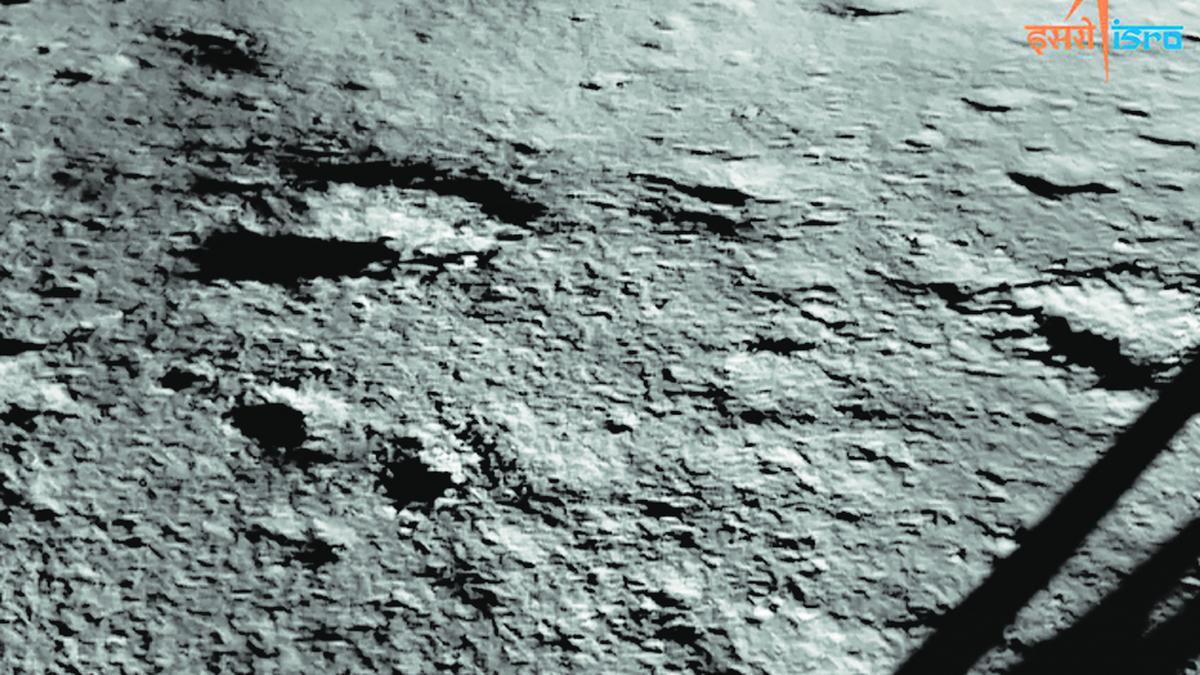The portion of Chandrayaan-3’s landing site taken by Vikram Lander after the successful landing. Photo: ISRO
In a new finding, scientists of the Physical Research Laboratory (PRL) have revealed that the landing site (Shiv Shakti point) of the Chandrayaan-3 mission is a promising site to access primitive mantle samples, which was otherwise lacking in the existing lunar collections.
The scientists have analysed the concentrations of volatile elements measured at Shiv Shakti station near the South Polar Region, using the Alpha Particle X-ray Spectrometer (APXS) onboard the Pragyan rover of the mission.
“A comparison of the APXS measured abundances with the other available data revealed anomalous depletion in sodium and potassium, but enrichment in sulfur in the soils at the highland landing site,” ISRO said.
This study was published in the journal Nature Communications Earth and Environment.
“The study has revealed potential presence of primitive lunar mantle materials at the landing site, which was excavated during formation of the South Pole-Aitken (SPA) basin 4.3 Ga ago and redistributed by subsequent impacts on the SPA basin ejecta,” it added.
It further said that the primitive mantle contributed the excess sulfur, which got mixed up with the materials at the landing site.
“The low levels of sodium and potassium at the landing site suggests that the KREEP (potassium, rare earth elements, and phosphorus) might not have existed at the place and time of SPA basin formation,” it said.
The APXS payload also measured abundances of volatile elements, including sodium, potassium, and sulfur in the highland soils, and reported varied concentrations ranging from 700-2,800 ppm, 300-400 ppm, and 900-1,400 ppm, respectively
PRL scientists made a detailed analysis of the abundances of these volatile elements and found the concentrations of sodium and potassium at the Chandrayaan-3 landing site was found to be much lower compared that found in the soil samples from lunar highlands in earlier missions (Apollo 16 and Luna 20), while the concentration of sulfur was found to be 300-500 ppm higher than in soils from Apollo 16 and Luna 20 missions.
“The anomalous differences in the concentrations of these volatile elements make it important to investigate the probable source that led to their enrichment or depletion at the Chandrayaan-3 landing site,” ISRO said.
These findings make the Chandrayaan-3 landing site a promising place for future missions to collect samples, particularly to study the early evolution of the moon.
Published – May 01, 2025 12:28 am IST
